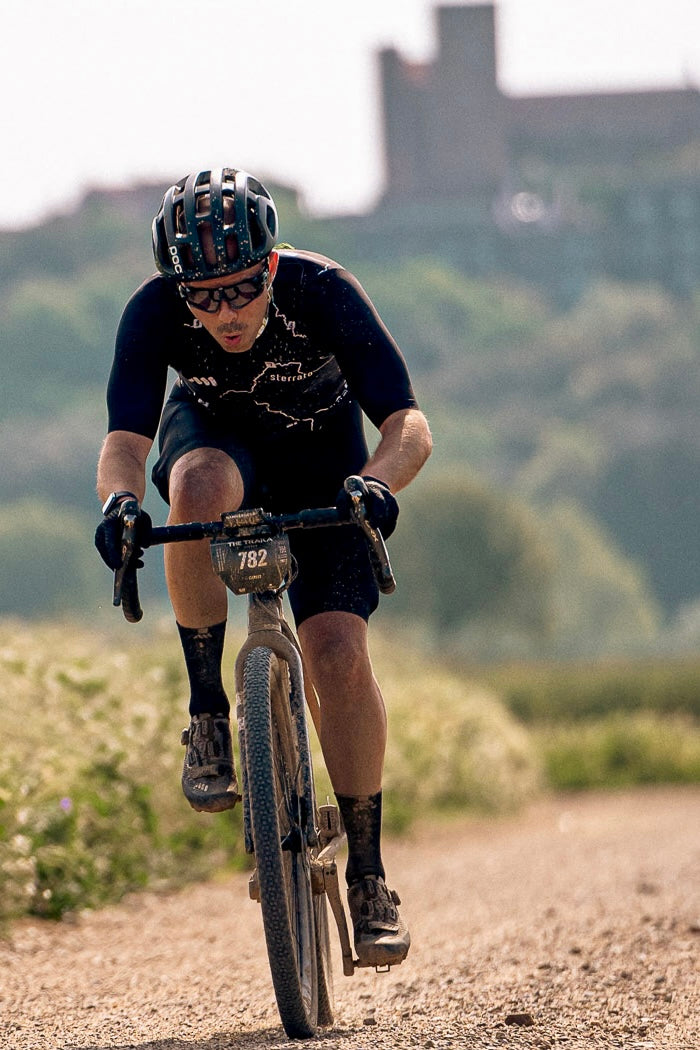Bike weight reduction: Tips for Improved Performance
Shed Weight and Boost Performance on the Trails.
Mountain bikers are always looking for ways to shed weight from their bikes, whether it's for Enduro, All Mountain, XC, or any other discipline. This is even more evident on road and gravel cycling.
In this post, we'll discuss some tips for reducing weight and improving performance without sacrificing reliability or breaking the bank.
To sum up:
To make your mountain bike lighter focus on:
1. Drivetrain: Simplify and Save
Weight Switching to a 1x12 drivetrain is an excellent way to save weight and simplify your bike. With fewer parts, there's less chance of something breaking, and you can focus more on shredding the trails rather than shifting gears.

2. Cockpit: Balance Weight, Performance, and Looks
Investing in a high-quality handlebar and stem can save weight while improving your bike's appearance and performance. You don't need to opt for carbon components exclusively; many lightweight aluminum handlebars and stems offer excellent performance without the risk of sudden failure.
3. Wheels: Reduce Unsprung Mass for Better Handling
Reducing weight is important, but it’s even more important in unsprung mass components. An easy way to understand which are the unsprung mass components are those “below” the suspensions. Basically wheels and swingarms on double suspension bikes.
Lightweight rims can significantly improve your bike's handling by reducing unsprung mass. While carbon wheelsets may be tempting, they can be quite pricey. There are many affordable, lightweight aluminum wheelsets available that deliver excellent performance without breaking the bank.
4. Tires and brakes: Prioritize Traction and Confidence
When it comes to tires, consider prioritizing traction and confidence over weight savings. Tubeless tire setups can help you save weight and improve puncture resistance. Choose tires that provide excellent grip so you can push your limits and ride faster, even if they're slightly heavier.
Same applies to brakes. Some gimmicks don’t justify their costs. Instead, invest in reliable, high-performance brakes that provide consistent stopping power in all conditions.
5. Accessories: Keep It Essential
Remove any unnecessary accessories from your bike to save weight. However, make sure to keep essential protective gear like frame guards. Our Frame Guards, for example, can add only around 20 grams of weight but protect your frame and potentially save you money when selling your bike in the future.
6. Evaluate Your Gear
Before spending loads of money on bike upgrades, consider the weight of your backpack and gear.

First of all, if you can, ride without a backpack. You can still ride with the essentials in case you flat by using straps which would allow you to strap a tube, a CO2 cartridge and a couple of tire levers so you can repair a flat.
Ask yourself questions: Can you reduce the amount of water?. Do you really need 2 bottles? Isn’t a small water bottle enough? Do you need all those tools you carry? Are extra gloves necessary? You might find that you can save more weight by optimizing your gear than by upgrading your bike.
7. Improve Yourself
Last but not least. The most significant improvement you can make is to improve yourself. Ride more, train harder, and focus on your fitness.
Losing weight and increasing strength and endurance will lead to better performance on the trails and more enjoyable rides. You don’t need to become one of those ultra skinny and bad looking Tour de France riders, but maybe you can shed some grams, can’t you?

In conclusion, focus on making smart upgrades and optimizing your gear to save weight on your mountain bike. Most importantly, invest in yourself by riding more and training harder. The result will be a lighter bike, improved performance, and a better overall riding experience.













